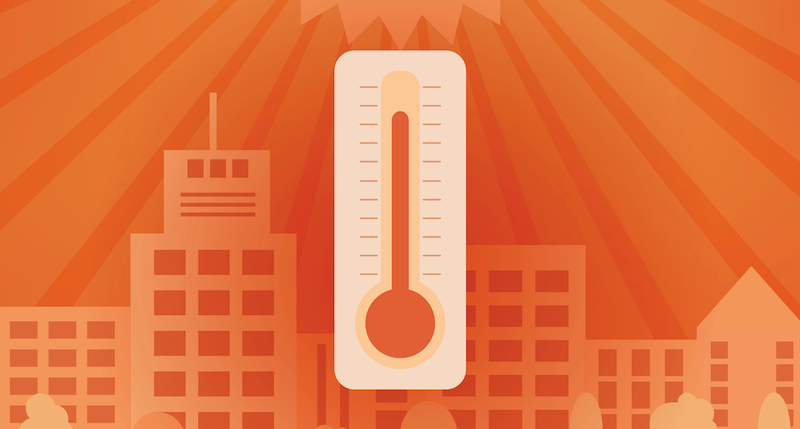Facility Management
Energy Auditing 101: Rebounding From The Effects Of Extreme Weather
Discover how energy audits can be a game-changer in managing energy consumption, especially after experiencing scorching summer heatwaves. Learn about the critical role commercial building energy audits play in reducing costs, enhancing sustainability, and ensuring comfort for all occupants. Dive into the core concepts of energy auditing for commercial buildings and gain insights on how to conduct an effective audit for improved energy efficiency.
Why Opt for a Commercial Building Energy Audit? After enduring extreme heatwaves that strained power grids and inflated energy bills, the urgency of managing energy consumption in commercial buildings cannot be overstated. Conducting a comprehensive commercial building energy audit is crucial to prepare for and mitigate the impacts of future weather challenges.
A commercial building energy audit involves a systematic evaluation and analysis of energy consumption, aiming to pinpoint areas for improvement. The primary goal is to enhance energy efficiency, leading to lower energy consumption, reduced utility bills, and a smaller environmental footprint.
The audit not only identifies energy wastage but also provides invaluable insights and improvement opportunities, essential in today’s evolving climate landscape. It’s a pivotal step towards making your commercial building more energy-efficient and resilient.
Benefits of Conducting a Commercial Building Energy Audit:
- Lower Operational Costs: Enhanced energy efficiency translates to reduced operational expenses and lower utility bills, positively impacting a business’s bottom line.
- Build Resilient Buildings: Energy-efficient measures not only safeguard profits but also ensure continued operations during power disruptions, heating or cooling outages, and other challenges.
- Enhanced Comfort for All: A more energy-efficient building creates a comfortable environment for customers and employees, contributing to overall satisfaction.
Types of Commercial Building Energy Audits: Commercial building energy audits are typically categorized into three types:
- Preliminary Energy Audit: Provides an initial assessment, identifies low-cost energy-saving opportunities, and outlines potential improvements.
- Level I Energy Audit (Walk-Through Audit): Involves a detailed walk-through inspection, focusing on energy-efficient opportunities related to lighting, HVAC systems, and more.
- Level II Energy Audit (Detailed Energy Analysis): Offers a comprehensive evaluation of energy consumption and building systems, featuring data collection, analysis, and detailed recommendations for efficient upgrades.

Steps to Conducting a Successful Commercial Building Energy Audit:
- Gather Utility Bills: Start by collecting your commercial building’s utility bills for the past year to understand energy consumption patterns and establish a baseline for comparison.
- Conduct a Thorough Inspection: Inspect your commercial building meticulously, both internally and externally, to identify signs of energy inefficiency like drafts, leaks, and inadequate insulation.
- Identify Energy Sources: Compile a comprehensive list of all energy sources and systems in your building, including lighting, HVAC, appliances, and machinery, to streamline the audit process.
- Assess Lighting and HVAC Systems: Evaluate the energy efficiency of your lighting and HVAC systems, considering upgrades to energy-saving solutions and optimizing HVAC controls.
- Conduct an Energy Assessment: Utilize energy auditing tools or software to input your data and generate a comprehensive energy assessment report, highlighting improvement areas and offering recommendations.
Implementing Energy-Efficient Improvements: After completing the energy audit and receiving the assessment report, take strategic actions:
- Prioritize Recommendations: Review and prioritize the recommendations in the assessment report based on cost-effectiveness and potential energy savings.
- Implement Energy-Efficient Upgrades: Consider making upgrades such as installing energy management systems, upgrading HVAC systems, and incorporating smart hardware for enhanced efficiency.
- Monitor and Adjust: Continuously monitor your building’s energy consumption post-improvements, adjusting settings and practices as needed to optimize savings and efficiency.
Start Your Energy Audit Journey Today: Given the escalating energy costs and the impact of extreme weather events, conducting a commercial building energy audit is an essential step for businesses. It aids in cost reduction, minimizes environmental footprints, and fosters better working environments. Don’t wait for the next weather extremity – initiate your commercial building energy audit today and take charge of your energy usage. It’s a stride towards a more efficient and environmentally responsible future for your business.
Overwhelmed? Let Us Assist You! While it might seem logical to rely on in-house staff for the audit due to their familiarity with the building, untrained eyes can miss potential savings and hidden issues. Energy audits should be conducted by experts like GridPoint, ensuring comprehensive assessments.
GridPoint offers a cost-free energy audit, deploying energy experts to evaluate up to five facility locations. Our auditors identify opportunities to enhance your HVAC and lighting systems, ultimately reducing your operating costs. Leveraging data from the audit, GridPoint provides actionable recommendations proven to save your company money and streamline budgeting.
Ready to benefit from GridPoint’s expertise? Sign up here for a free energy audit and pave the way for a more energy-efficient future.

